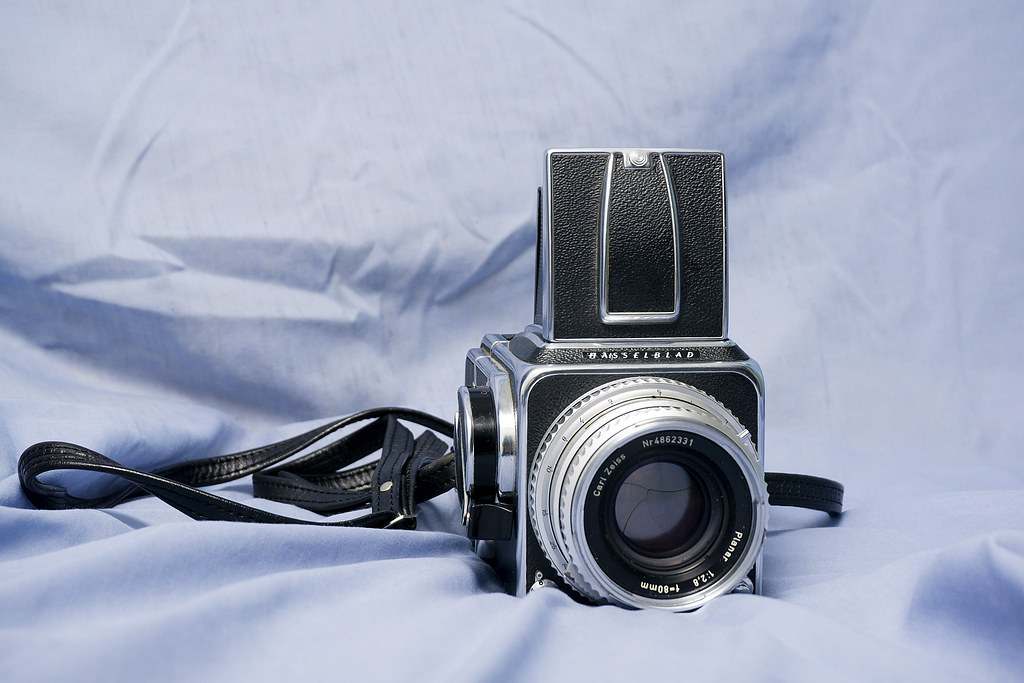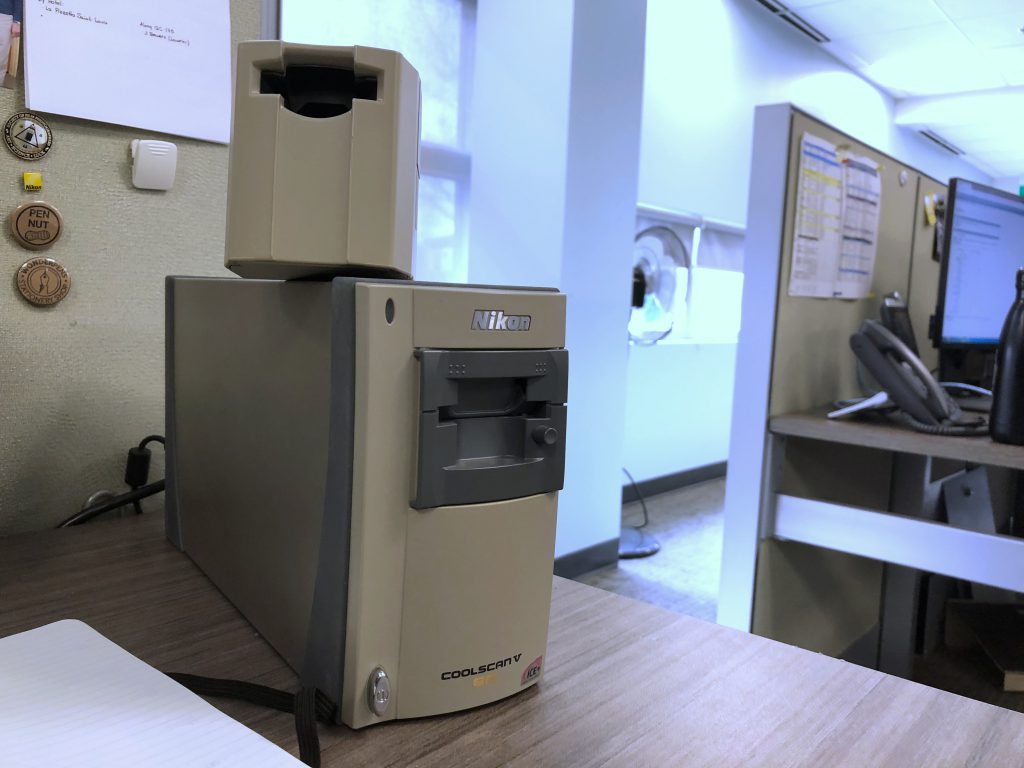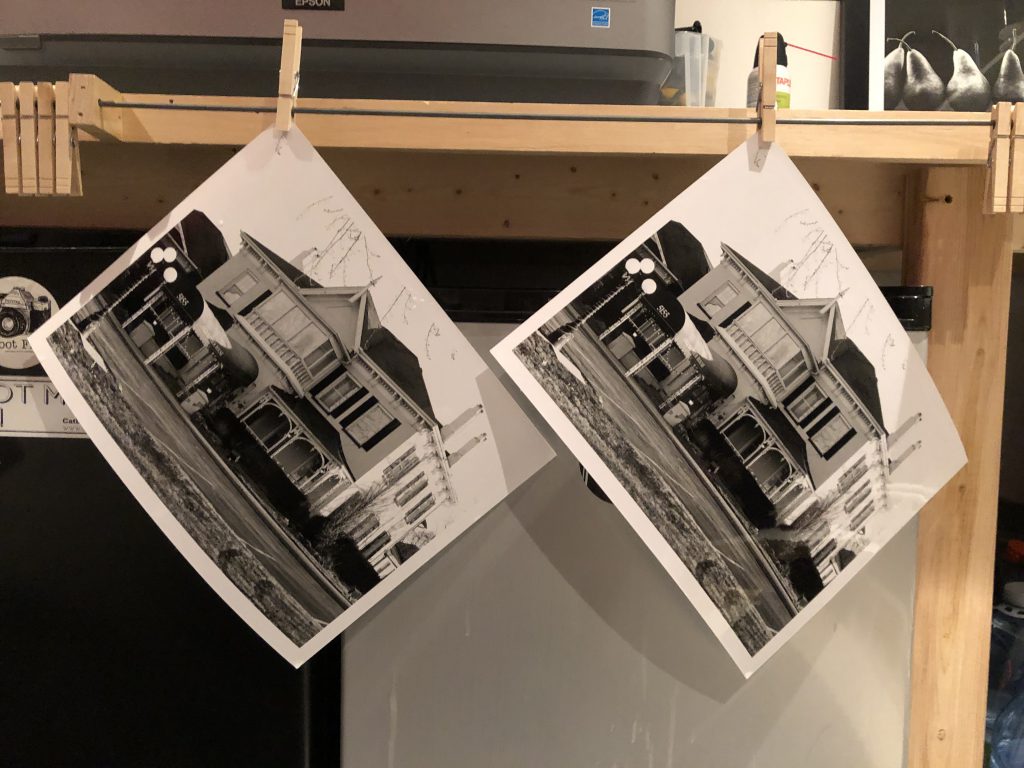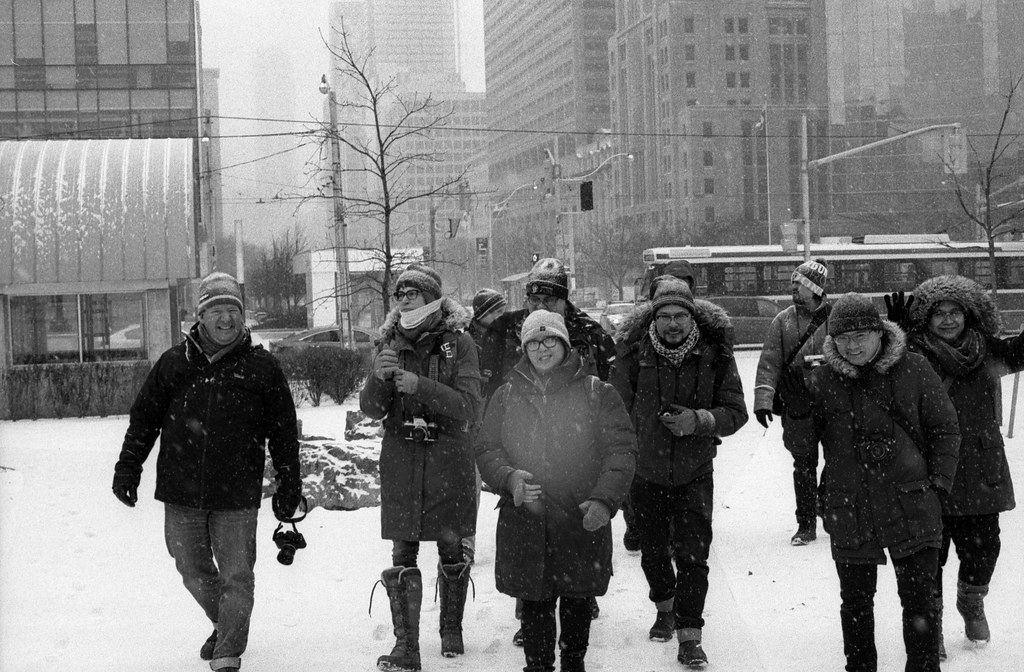And One of the most accessible hobbies and an art form is photography. And while some might say that photography isn’t art, that’s a subject for another issue altogether. If you’re wondering where this post came from, it was a sudden inspiration driving home from a photo trip and a series of posts that I had seen flying around some Facebook groups related to film photography. The trouble with the Internet is that everyone can spread their opinions around some are good and others are bad. But the one thing that I want to try and address in this post is the idea of gatekeeping. Photography as a medium has not been around for a long period of time. And in the early days, the process was toxic, long, and involved. Like any skilled trade, you needed to get an established photographer to take you on as an apprentice so that you could learn all the skills needed. Cameras were large and cumbersome and actually taking the picture involved making the emulsion yourself. Then George Eastman showed up at the end of the 19th Century with the Kodak, a camera that allowed anyone to get out take pictures and then let professionals process the film and reload your cameras. Photography was now in the reach of everyone. And things like 120 film, 35mm film, Polaroid, Instamatic, and even more, photography got easier and everyone had a camera, labs were everywhere. But digital technology allowed photography to become accessible to even a wider group of people, as no longer did you need to send your film away or even wait to see the image. Plus with the addition of cameras on your phone, you can just take your shot and instantly share it with friends and family! It made the hobby even more accessible and personally, I love having a camera on my phone for snaps. And to get one thing clear before you continue, you don’t even have to shoot film to enjoy photography on the whole. But what does all that have to do with film photography? Simple, the idea of gatekeeping has returned to this niche of the photography community, the idea that you must do this, that, and the other thing to get the required knowledge and then you can have full enjoyment of your newfound hobby. Now, I’m painting the niche with a wide brush here, there are a lot of people who are welcoming, free with information, and genuinely willing to help out anyone no matter what they had or wanted to do with their film photography. And yet there are still others that insist that people have to do certain things to get the most out of their film photography. Or mope around about the good old days when this was a land flowing with film and developers or the rising cost of buying film. As I wrote in an earlier post, a film camera won’t make your photography better, I’m going to say that you don’t have to do anything that these gatekeepers say to get the most out of your photography. So below I’ve come up with a list of things that you don’t have to do to enjoy your film photography.
Shoot a Specific Camera System
There are a lot of excellent cameras out there, those with fixed lenses, those with interchangeable lenses. All of the various types, qualities, and film types. And there is a tonne of different styles and formats of cameras out there in the film world. SLR, TLR, View Camera, Press Cameras, Rangefinders, Box, Toy, Instant, Point-And-Shoot, and so many more. The trick is finding what works best for you, but again there are many out there that believe that to enjoy photography or get the best images you need to shoot a specific camera system. If you’re a street photographer you need to shoot a rangefinder, or if you love shooting landscape you need to shoot large format. Well, all those things are certainly not true. I’ve shot landscapes using a medium format Rolleiflex and Hasselblad and done street photography on an SLR a big bulky professional SLR at that and gotten excellent results. Use the systems that you’re comfortable with and use them with any subject matter you like.

On a similar vein, there are many that say that you have to shoot certain brands to get good images and to enjoy the film photography process. Nikon, Canon, Pentax, Leica, Hasselblad, Rolleiflex are the big names and often attract the big bucks on the used market. But you don’t need to shoot those to enjoy the film photography experience, the important thing is to get to know your gear, shoot it, and just have fun. And you don’t even have to limit yourself to western cameras, there are plenty of awesome cameras to come out of the Soviet photographic industry which at its height was the third-largest in the world. You don’t even need to stick to the high-end cameras if you want to shoot toy cameras go for it. Shooting toy cameras is a lot of fun with the strange image results. The most important part is to shoot the cameras you love and enjoy the cameras you shoot.
Develop your own film
I love processing my own film, it’s second nature to me, but I’ve been doing it for almost a decade at this point. It offers me a level of control that I just don’t get from a lab especially for my black & white work. But to enjoy your own photography, you don’t have to process your own film. You can send it off to a lab and let them do the dirty work. And who can blame you, the chemicals used for developing film are toxic, they smell bad, and the whole process is humbling as you can mess up at any step and wreak your film. And full admission, while I know how to process my own colour film, I choose not to and instead leave that to labs.

You can also choose not to scan your own film and instead let the labs handling the scanning. While there’s less of a chance to mess up your film when scanning, but getting the best out of the negative scans can be difficult, especially with colour film. Not to mention with so many choices out there for scanning, there is no right way, just the way that works best for you. Flatbed, Camera, Dedicated there are as many ways to scan film as there are to develop the film. If you do decide to scan your own film, find a solution that works best for you and do the best you can.
Darkroom Printing
Like developing your own film, printing your negatives in the darkroom is a whole world of hurt, money, and space. While you can start developing your own film for a low cost, building a darkroom even a small one that fits on a cart in your bathroom can carry a fair overhead. Plus actually, printing is a fine art and takes a lot of effort. And while equipment can be had on the cheap these days, you’re still investing in a lot of needed space, time, energy and supplies. Is it satisfying when it works, absolutely, but not needed to enjoy film photography. But I do recommend printing your work, even if it is just through a self-published photobook, inkjet printer, or through a lab.

Own/Use Multiple Cameras/Lenses/Films
Repeat after me, you don’t have to be a collector to be a photographer, similarly, you aren’t always a photographer is you’re a collector. Now before you come after me, yes I own multiple cameras and multiple camera systems. But a lot of my online writing/podcasting/video work focuses on reviewing films, developers, cameras, and lenses. So my own camera kit is a toolkit, I use almost every piece of gear that I own. But to get enjoyment out of your film photography you don’t need five camera bodies and twenty-six lenses. If you love to shoot one camera and one lens and that’s all you have, then that’s all you need, honestly. Shoot the kit you enjoy. That said, if you want to just collect cameras and display them in a private museum, that’s okay too, you do what makes you happy.

Shoot Manual
Shooting manual, and by manual, I mean manual focus or manual exposure is something I consider a gatekeeping tactic. And while I haven’t seen it around on some of the groups I’m a member of I have seen it in the past where established photographers insist that you must shoot manually in some form or another. Don’t get me wrong, shooting manually has helped me get a better understanding of exposure and gives me some creative freedom and use of some great cameras. But you don’t need to do anything manually to get enjoyment out of your film photography especially if you’re just starting out. These days most cameras have Program Mode where the camera takes care of your exposure for you, and to be honest 80% of the time when I’m running my Maxxum 9 or F5 in full program mode so I can focus on creating the image and let the excellent meters in the camera do the heavy lifting. And to be honest, I get a lot more enjoyment using those cameras in full auto-exposure. The same goes with manual focusing, sure it opens up creative opportunities, but if you’re just starting out it can be frustrating. And sometimes you just want to go out and get some photos and not worry about those details. Again, great to try and to learn, but not always needed for enjoyment of the hobby.

Shoot B&W or Colour Films
As I’ve been trying to say throughout the post so far is that you can make all the choices yourself to make the hobby an enjoyable one and that goes right down to what you load into your camera. You don’t need to shoot black and white and you don’t need to shoot colour film. While both can give you excellent results, they both have their own downsides. Both are easily processed at home and there are still plenty of labs out there. I often find that colour film can be frustrating to scan, especially getting the colours right. Thankfully there’s a great group of people in the community that have created software to help with getting that colour right. Plus there’s the matter of cost, colour film can be expensive especially the good stuff. And these days with lots of disruption in supply chains that limit the amount of colour film available. Similarly, the amount of black & white film out there can be overwhelming each having their own pluses and minuses. And shooting black & white can present the world in a way that many might not like, where colours are rendered in shades of grey. Personally, I like black & white and almost shoot it 90% of the time and if I want colour, I’ll shoot my digital camera.

Share your Work
That’s right, you don’t have to share any of your work to get enjoyment out of your film photography. You don’t even have to get your film processed, you can just leave it in tonnes of boxes, leave it in a storage locker and let people discover you decades later. Or just save them for yourself, fill albums with your photographic work for enjoyment by you and those you choose to share them with. The Internet is a scary place, filled with tonnes of people who are both friendly and not so friendly. And with tonnes of channels to share, it can be overwhelming. And content creation for your hobby should not become a job unless you’re getting paid. And as I mentioned at the beginning, there are some crotchety members of the online film photography community that will give any beginner pause. In fact, if you have had a bad experience with such members of the community, those gatekeepers, you might even decide to drop the hobby all together. Which is terrible because you get into hobbies for enjoyment. So you don’t need to share or join an online community in any form to enjoy film photography.

On a similar topic, there’s the matter of critiques. A well delivered and invited critique is a great way to learn and improve your technique and craft. But you don’t have to accept anything that the person says, especially if you don’t trust their judgement or see them as an expert. Online critiques can often come from keyboard warriors who can act as gatekeepers, and often are uninvited by the person posting. These uninvited critiques can be questioned by you or simply deleted and ignored. A person who critiques should always be able to defend their position and work with the original author. And a good critique isn’t just negative points, but rather complementary and showing areas for improvement and most importantly how to improve. Plus offering guidance. I know I wouldn’t be where I am today without the help of James Lee, Mat Marash, Bill Schwab, John Meadows, Bill Smith, Julie Douglas, Chrissie Wu, Mike Raso, Stephen Dowling, Mike Eckman, and many many more photographers.

But what can you do to enjoy film photography? That’s an easy one! Get out, enjoy the camera(s) you have, shoot how you like to, shoot what you love and how you think they should be shot. Be proud of your results. Always be willing to learn and try something new. Figure out what you like, listen to those who give good pointers and good critique. And go out and have fun because photography is supposed to be fun, an escape from the ordinary a hobby that allows you to get some exercise and capture the world as you see it! And if you can find a welcoming community and fellow photographers who will build you up not tear you down.

Thankfully, I’m lucky in the sense that when I started with photography and the wider film community I connected with excellent groups within the community. People were genuinely helpful, especially the gang from the Film Photography Project, Emulsive, and my good friend Julie who taught me how to both process my own black & white film and print in the darkroom. And even many of the groups I’m part of in Social Media are welcoming and helpful to all who are part of the group or just joined. But yeah, there are others who are terrible to these new members. So what am I trying to say here, don’t be a gatekeeper, instead be a Concierge, be willing to help out to the best of your ability! Try not to be disparaging, hiding details, or ghosting people. And if you can’t say anything good, don’t say anything at all. Because your words may just make someone lose the enjoyment of their hobby, newfound or not.